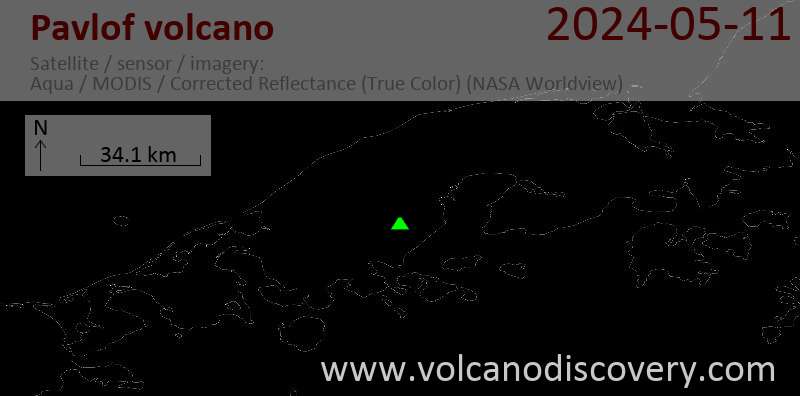Pavlof Volcano
Updated: May 15, 2024 13:49 GMT -
Stratovolcano 2519 m / 8,264 ft
Alaska Peninsula, USA, 55.42°N / -161.89°W
Current status: normal or dormant (1 out of 5)
Alaska Peninsula, USA, 55.42°N / -161.89°W
Current status: normal or dormant (1 out of 5)
Last update: 25 Jan 2023 (Smithsonian / USGS Weekly Volcanic Activity Report)

Pavlof Sister (left) and Pavlof Volcanoes (right) rise above a thick stratocumulus cloud deck (image: Marco Fulle / Stromboli Online)
Pavlov is the most active volcano of the Aleutian arc.
[smaller] [larger]
Pavlof volcano eruptions: 1762(?), 1790(?), 1817, 1825(?), 1838(?), 1844, 1846, 1852(?), 1866(?), 1880, 1886, 1892, 1894, 1901, 1903(?), 1906, 1914, 1917, 1922, 1924, 1929, 1936, 1950, 1951, 1953, 1958, 1960, 1966, 1973, 1974(?), 1975, 1980(Mar-May), 1980 (Jul)(?), 1980 (Nov), 1981, 1983 (Jul), 1983 (Nov-Dec), 1983, 1986, 1990, 1996, 2007 (Aug), 2013, 2014, 2016, 2017, 2019, 2020, 2021-ongoing
Latest nearby earthquakes
| Time | Mag. / Depth | Distance / Location | |||
Background
The 2519-m-high, largely snow-capped Holocene stratovolcano was constructed along a line of vents extending NE from the Emmons Lake caldera.Pavlof and its twin volcano to the NE, 2142-m-high Pavlof Sister, form a dramatic pair of symmetrical, glacier-covered stratovolcanoes that tower above Pavlof and Volcano bays. A third cone, Little Pavolf, is a smaller volcano on the SW flank of Pavlof volcano, near the rim of Emmons Lake caldera. Unlike Pavlof Sister, Pavlof has been frequently active in historical time, typically producing strombolian to vulcanian explosive eruptions from the summit vents and occasional lava flows. The active vents lie near the summit on the north and east sides. The largest historical eruption of Pavlof took place in 1911, at the end of a 5-year-long eruptive episode; a fissure opened on the northern flank of the volcano, ejecting large blocks and issuing lava flows.
---
Source: GVP (Global Volcanism Program), Pavlov information

















